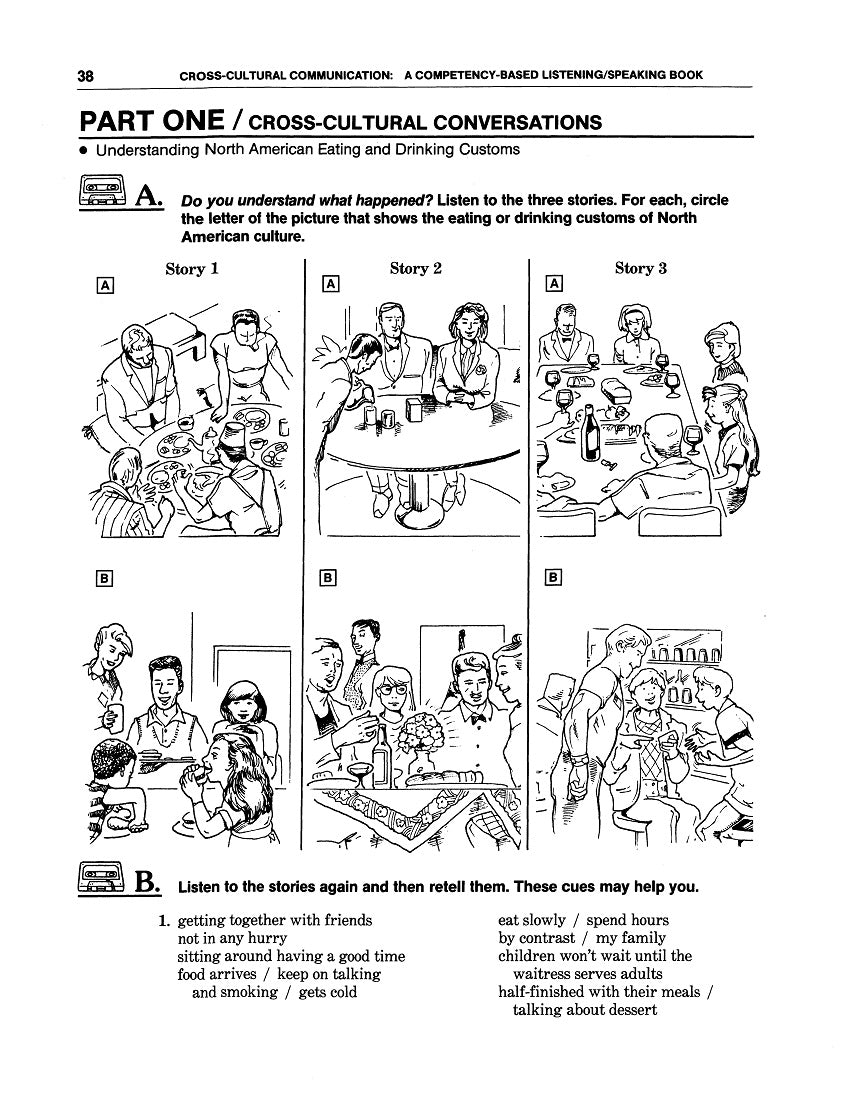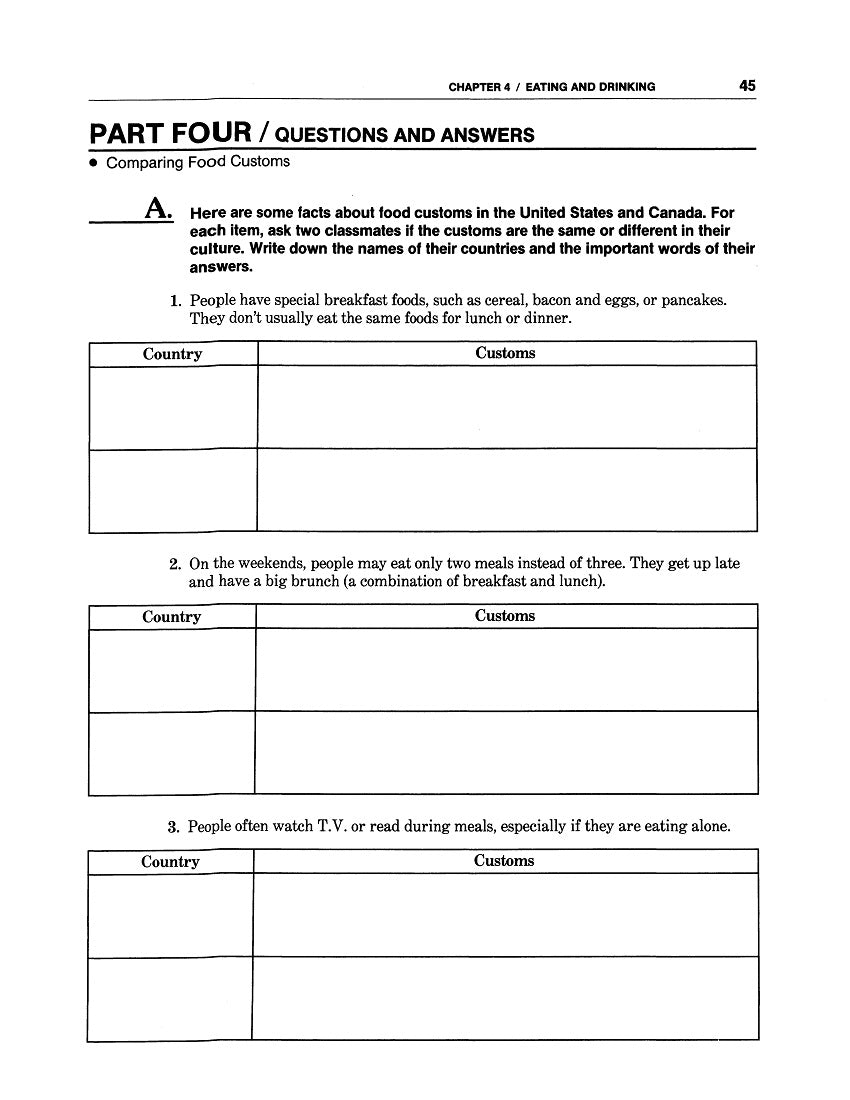Work/Life English
E-07.04 Take In & Eat Up Info & Ideas About Food & Drink in Local & World Cultures
E-07.04 Take In & Eat Up Info & Ideas About Food & Drink in Local & World Cultures
Cross-Cultural Communication
WorkLife English Competency-Based Listening/Speaking Book 4 Chapter 4: Eating & Drinking
10 + 2 = 12 pages
Who It’s For: English Speakers—with Instructors & Helpers—”Hungry” to Share What They Can & Get What They Need Concerning (the Pleasure) of Meals & Other Edibles
Why It’s Useful: Everyone in the world needs food and drink—and just about everyone who’s well-nourished has feelings, opinions, & thoughts about eating & drinking customs, typical dishes, recipes, favorites, and more. In Chapter 4 of WorkLife English: A Competency-Based Listening/Speaking Book 4: Cross-Cultural Communication, there’s plenty of opportunity to hear and talk about experiences in restaurants (while traveling), at (family) dinners & feasts, with special dishes & recipes, and the like.
What You’ll Do:
[1] Although listed Chapter 4 Competencies relate specifically to food, the language they elicit can be used generically in Describing & Comparing any created items, customs, or processes. The Grammar Focus is “the Future.” Even so, much of the verb phrasing for “directives” or “repeated action” is in the “Present Time Frame.”
[2] To “Understand Eating & Drinking Customs” in Part One, hear and understand three stories: speakers tell about eating out with friends from other countries vs. with a family with children; mistaking a flower container for a water pitcher; being confused about alcohol in the U.S. Tell what you think, observe others’ eating and drinking customs, and tell your own cross-cultural anecdote, if you have one.
[3] In Part Two / Practical Listening, hear about special dishes depicted in drawings: African likemba, Japanese soba noodles, a drink called chicha morada, a soup believed to help pregnant women, and two Mexican party foods. Jot down steps in preparing and eating corn-on-the-cob. Then teach the group about your favorite dish.
[4] Part Three / Speaking Activities features vocabulary common in recipes. Write down your own ingredients and instructions. Orally, exchange recipes with someone else.
[5] The topics addressed in Part Four are breakfast foods, weekend brunch, eating alone, buffets, grocery shopping, and kinds of restaurants. With Questions & Answers, “interview” two people from other cultures on these subjects. Tell others what you learn from Comparing & Contrasting the information and ideas.
[6] As usual, there are AudioScript segments attached to Download 07.04. And by the way, Download E-07.11 contains a four-page Answer Key for Text Exercises for the whole book.
Couldn't load pickup availability












